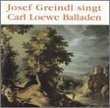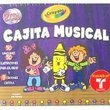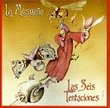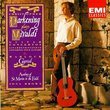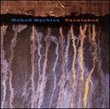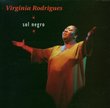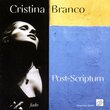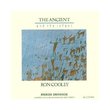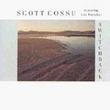| All Artists: Maria Kliegel, Sofiya Gubaidulina, György Selmeczi, Camerata Transylvanica, Kathrin Rabus Title: Gubaidulina: Seven Words; Silenzio; In Croce Members Wishing: 0 Total Copies: 0 Label: Naxos Release Date: 2/20/1996 Genre: Classical Styles: Chamber Music, Instruments, Strings Number of Discs: 1 SwapaCD Credits: 1 UPC: 730099455725 |
Search - Maria Kliegel, Sofiya Gubaidulina, György Selmeczi :: Gubaidulina: Seven Words; Silenzio; In Croce
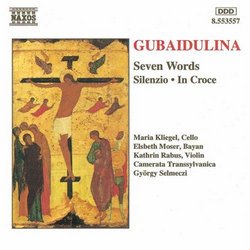 | Maria Kliegel, Sofiya Gubaidulina, György Selmeczi Gubaidulina: Seven Words; Silenzio; In Croce Genre: Classical
|
Larger Image |
CD DetailsSimilar CDs
Similarly Requested CDs
|
CD ReviewsQuiet, complex, worth a try vic spicer | 06/11/2000 (5 out of 5 stars) "when i read that the bayan is a russian button accordian, and i was expecting something perhaps like the compositions of piazolla. boy was i wrong.sometimes it flitters in the background, accenting its quietness with large sweeping cello motions and sad, profound strings.other times it leaps out at you in what seem like erratic but are highly structured forms. the juxaposition of strings and bayan is what makes these compositions immensely listenable. this isn't "easy" music, but it is fascinating.again my thanks to naxos for bringing late 20th century music at a price that encourages a listen. even if it's totally not what you expected." Complex Spiritual Music Christopher Forbes | Brooklyn,, NY | 01/24/2003 (4 out of 5 stars) "In a issue of the Catholic Reporter that I recieved from a friend, there is an article about the "new Spirituality" in music. In addition to profiling the Big Three of Holy Minimalism (Taverner, Part and Gorecki) the article includes rather extensive coverage of more disperate composers like Rautavaara and a mini section on Gubaidulina. On the face of this and similar press coverage, many have painted the Soviet composer as another Holy Minimalist, or at least a mystical neo-tonalist. An actual listen to the work of Gubaidulina shows the fallacy of such trite categorizations. Gubaidulina is fiercely individual, more adventurous than any of the other composers mentioned, deeply spiritual, with a greater wealth of ideas than Taverner, and with a broader emotional and tonal range than Part. She is also a more difficult listen, but immensely rewarding.This Naxos CD is a nice introduction to the work of the composer. While nothing on the CD is an unadulterated masterpiece, they are all solid and serious works, challenging and rewarding in equal measure. All of the works on the CD feature banyan (Russian accordian) and cello in various combinations. In Croce is perhaps the most radical work on the disc. Originally written for organ and transcribed for accordian with the composer's permission, it is a meditation on the Cross and is carried symbolically in the form of the piece. The banyan begins with apreggiated triads over a sustained cluster in the highest register while the cello plays figures in it's lowest register. Gradually both instruments move toward each other, crossing in a powerful climax and then switching places. In the hands of some composers, this could be a mere formal device, but Gubaidulina turns it into a white hot explosion of clusters and colors. The piece is deeply felt, tragic and ultimately redemptive. Silenzio is less explosive than In Croce, but no less challenging. Written in four movements for banyan, violin and cello, it shares the minimal textures of composers like Part, but is worlds away harmonically. Most of the movements are slow, and even the fast movement, No. 4, is static in content, as befits a piece about silence. Gubaidulina is not afraid of dissonance or of extended tonality. While she is certainly not a serial composer, neither is she blandly tonal. This piece is serious, intense, reminding one of nothing so much as a late Shostakovitch quartet. The biggest work, in scope and ambition, on the CD is the Sieben Worte for cello, banyan and string orchestra. Each of it's seven movements is a mediation on one of the Seven Last Words of Christ. As such it continues a long tradition that stretches back at least as far as Haydn. The work is characterized by microtonal glissandi in the strings and clusters in the banyan. Gubaidulina has an obvious familiarity and affection for the work of the Polish avant-garde. Though not anywhere near as harsh as Penderecki or Lutoslowski in the 60's, she shows facility with the most avant-garde techniques, yet uses them in the service of the emotion of her music, rather than as the entire content. This is a lovely, eclectic and moving work. None of the work on this CD is must-have Gubaidulina. For that I would go to the Offertorium, Viola Concerto or the St. John Passion (the strongest of the four pieces from the 2000 Passion Project.) But this CD does give a good overview of the composer and is marvelously performed. At the Naxos price, it's hard to pass up for anyone interested in new music." Music to love - and hate - simultaneously M. J. Smith | Seattle, WA USA | 02/04/2001 (4 out of 5 stars) "This collection is one with which a love/hate relationship is nearly inevitable. To really listen to this music requires energic concentration - you'll be emotionally exhausted. On the other hand, other than the first piece "In croce", you may put the music on and continue about your other work - treating it almost as ambience.While Gubaidulina has obviously been influence by chromaticism, and her choice of instruments, bayan, reflects her background Turkic Russian, she writes with a firm independence. The cello, bayan and strings are used in a way that make you think this is exactly the correct instrumentation - even after reading that "In croce" originally used an organ.Even in "Seven Words", she does not paint "tone poems" or attempt to convey the words through music ... rather she uses music to convey in its own media what words do in theirs. This is the genius that keeps me coming back to her works even while being uncertain that I like them. I may not personally be fond of dissonance but I am always entralled by Gubaidulina's ability to use the media of music."
|

 Track Listings (13) - Disc #1
Track Listings (13) - Disc #1


